How to land your first 10 customers (the right ones)
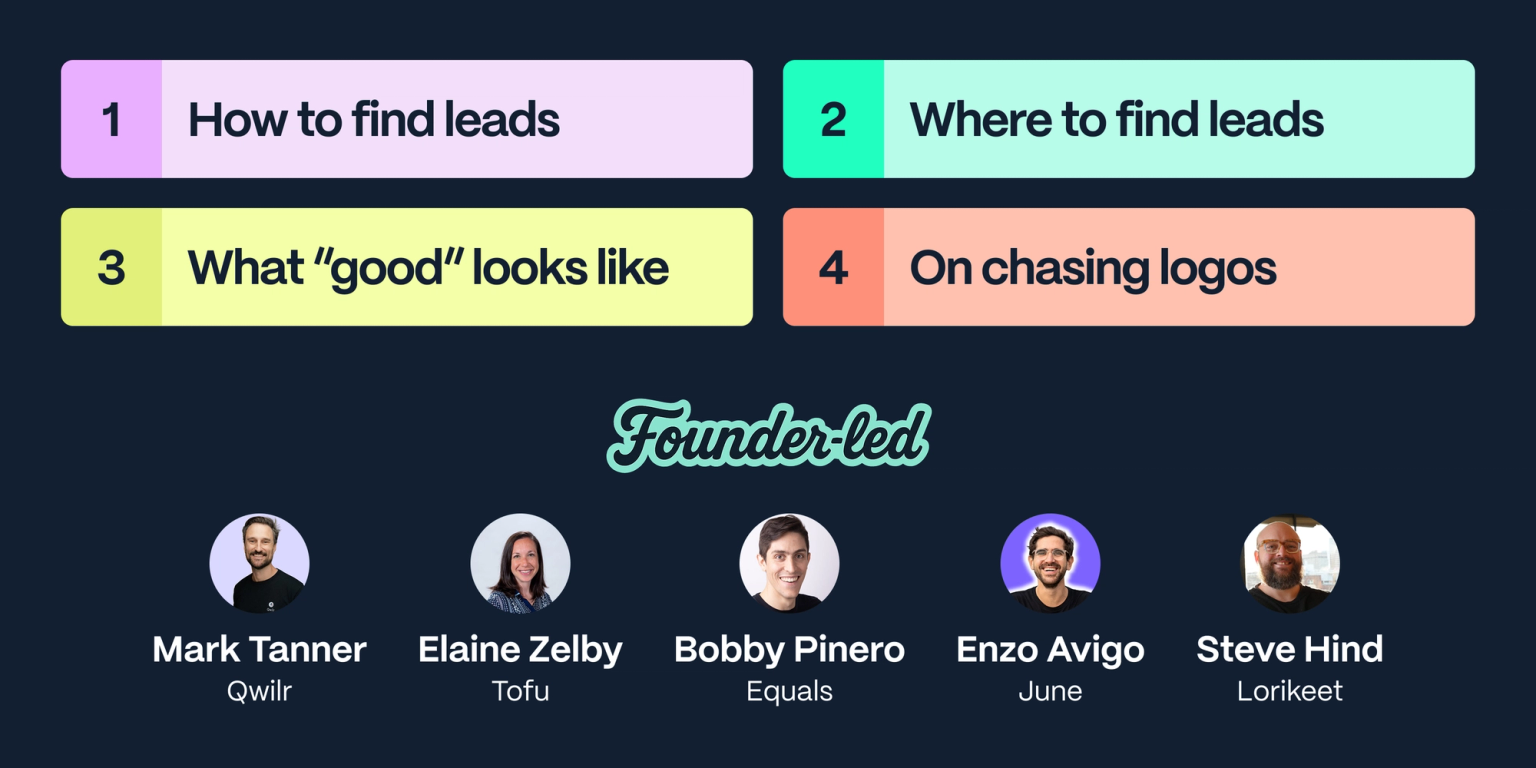
You’ve been building in stealth for the last 6 months and now it’s time to release your product to the world. You are going to be tempted to sign up the first customers that come along and look like a good fit for your ICP. Don’t.
Your first 10 customers make or break your business. They are much more influential than the first 100 customers and definitely the first 1,000. Sign up the wrong initial customers and you’ll get the wrong feedback on what to build and risk being pulled in many conflicting directions.
There’s some intuition and gut instinct that the founder has to apply to product roadmap and strategy. But it has to be validated by your paying customers.
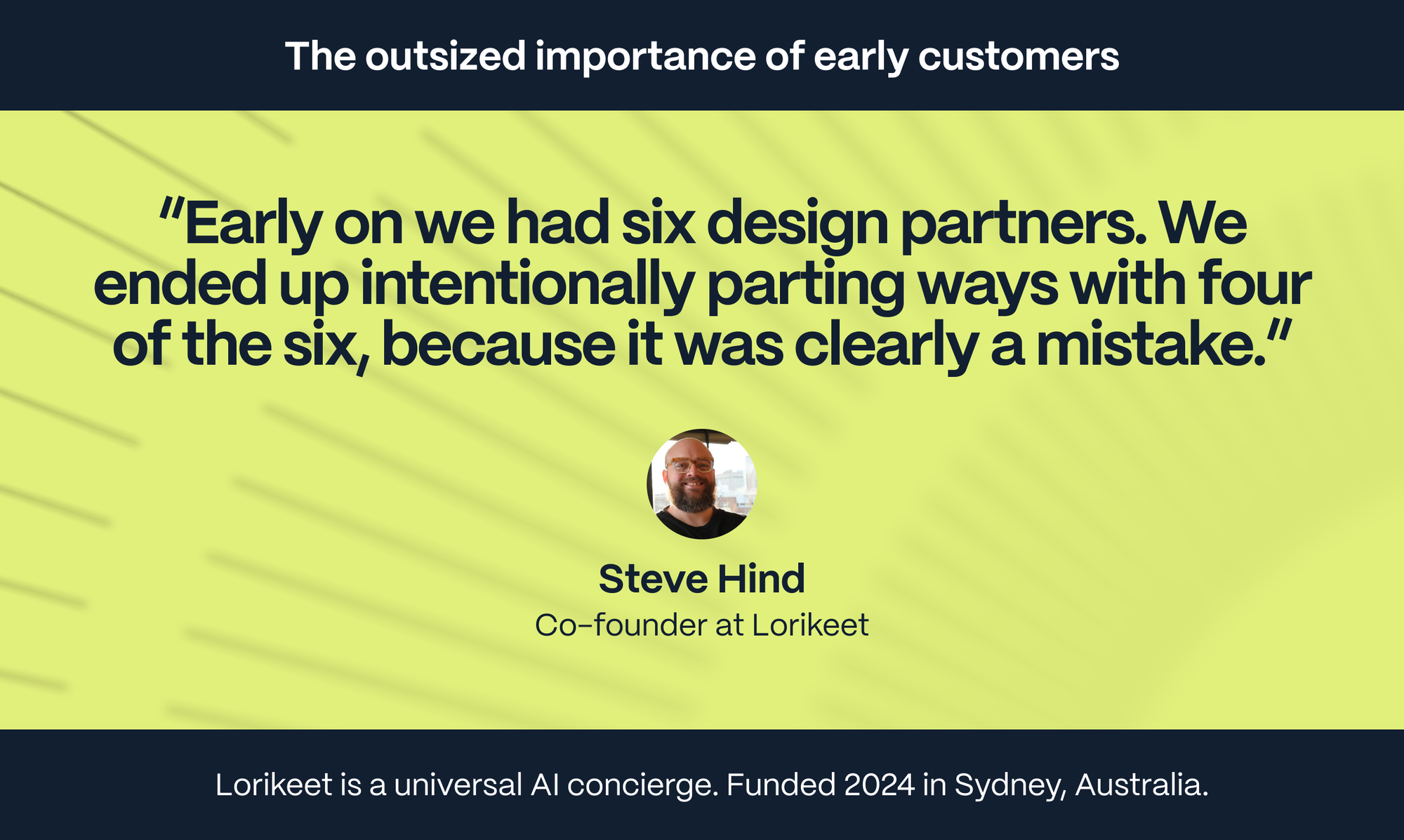
The thing that was helpful for us to learn is to what extent are the problems we’re addressing the same or different across different types of companies. The six were sufficiently different that we just couldn't, especially as a very small team at the time, give them enough attention to make them successful — because their needs diverged.
We realized the mistake and slimmed it back down to a set of customers that had much more in common. We felt like the things that we needed to solve for each of them was compounding and creating some learning. Then after a bit of time working with them, we slowly added from there.
- Steve Hind, co-founder and CEO of Lorikeet
How I found my first leads
At Iteratively, my first startup, it took us a long time to discover which channels were most effective at bringing them in.
I’d previously worked on the Growth team at Atlassian, so I was used to running experiments. We tried LinkedIn, which worked relatively well. We tried some lightweight outbound, but nobody wanted to reply, regardless of what hook I used. We ran through webinars, partnerships, and influencers, but nothing delivered for us at scale. We were trying lots of things that were high energy, high effort, but had zero impact on the growth of the business.
What was low effort but medium impact was showing up, and being helpful and authentic, in communities where data scientists (our ICP) were hanging out. I’d contribute advice whenever I thought I had something relevant to share, and I didn’t look for anything in return. I was in those communities even before we had a product, as it allowed me to learn about the ICP and the problems they had in their day-to-day.
Over time, the community channel generated around half of our customers.
The other half of our early leads came from content. I wrote a lot (and this was before GenAI) and actively shared it in the data science community.
All of that activity increased brand awareness and generated trust with our ICP. But I had to learn how to do it. I hadn’t written content or spent time in communities as part of any of my prior jobs. As a user researcher, I knew what to do once I got on a call with a customer, but I needed to convince people to take those calls in the first place.
My P0 metric became getting people on a call, and I obsessed over it. Did I have the right hook to get people on a 30-minute call and answer questions about their pain points? Inspired by Disciplined Entrepreneurship and its 24-step program, I started with a goal of 10 calls per week, then 15, 30, etc.
Where you’ll find your leads
A lot of folks assume people are going to come to them. Sadly, that’s just not the case.
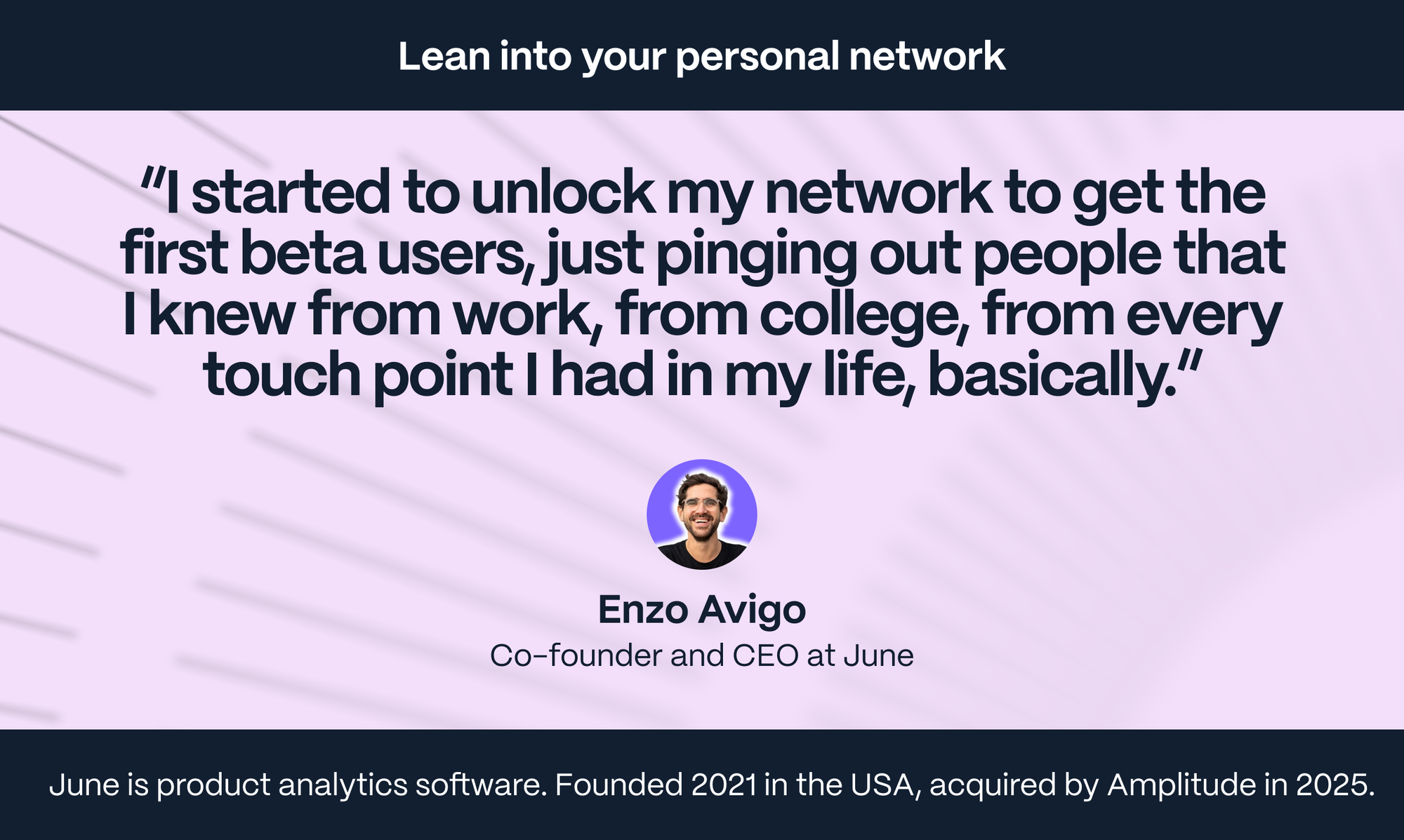
I wouldn’t call that sales at the time. I would just call that networking, right? So at this point, I guess it's the early stage of doing some sales, but really you're not looking for a high volume yet or scalability. You're looking just for some early touch points.
- Enzo Avigo, co-founder and CEO of June
The channels that work for you will be different. Try them in a controlled manner and then move on if they aren’t working. Here’s some that have worked for others:

Begin the hunt for channels that will work for your business by asking yourself where your people hang out.
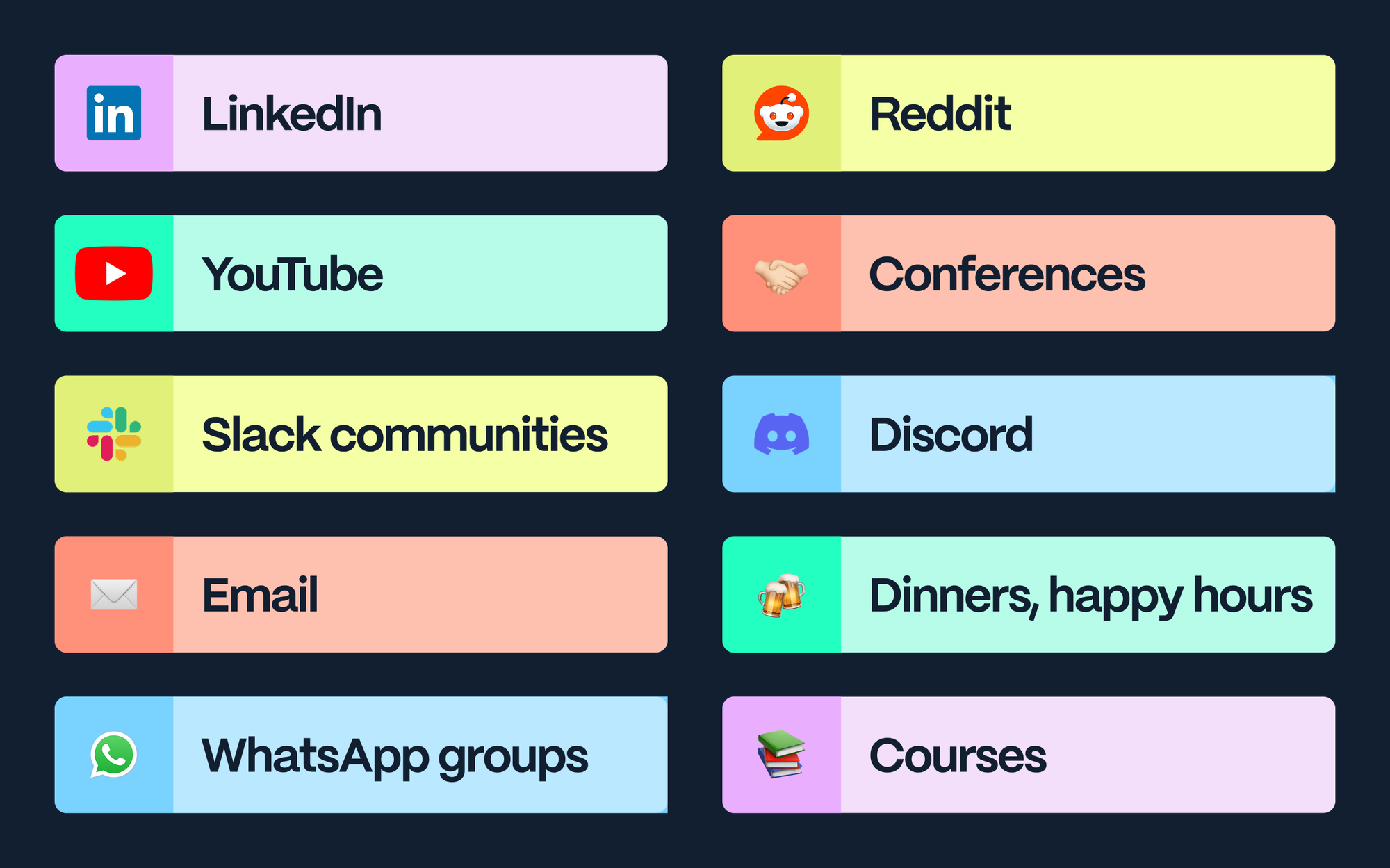
Obviously, this list is far from definitive, but it should inspire you to create your own list and start a series of rapid experiments.
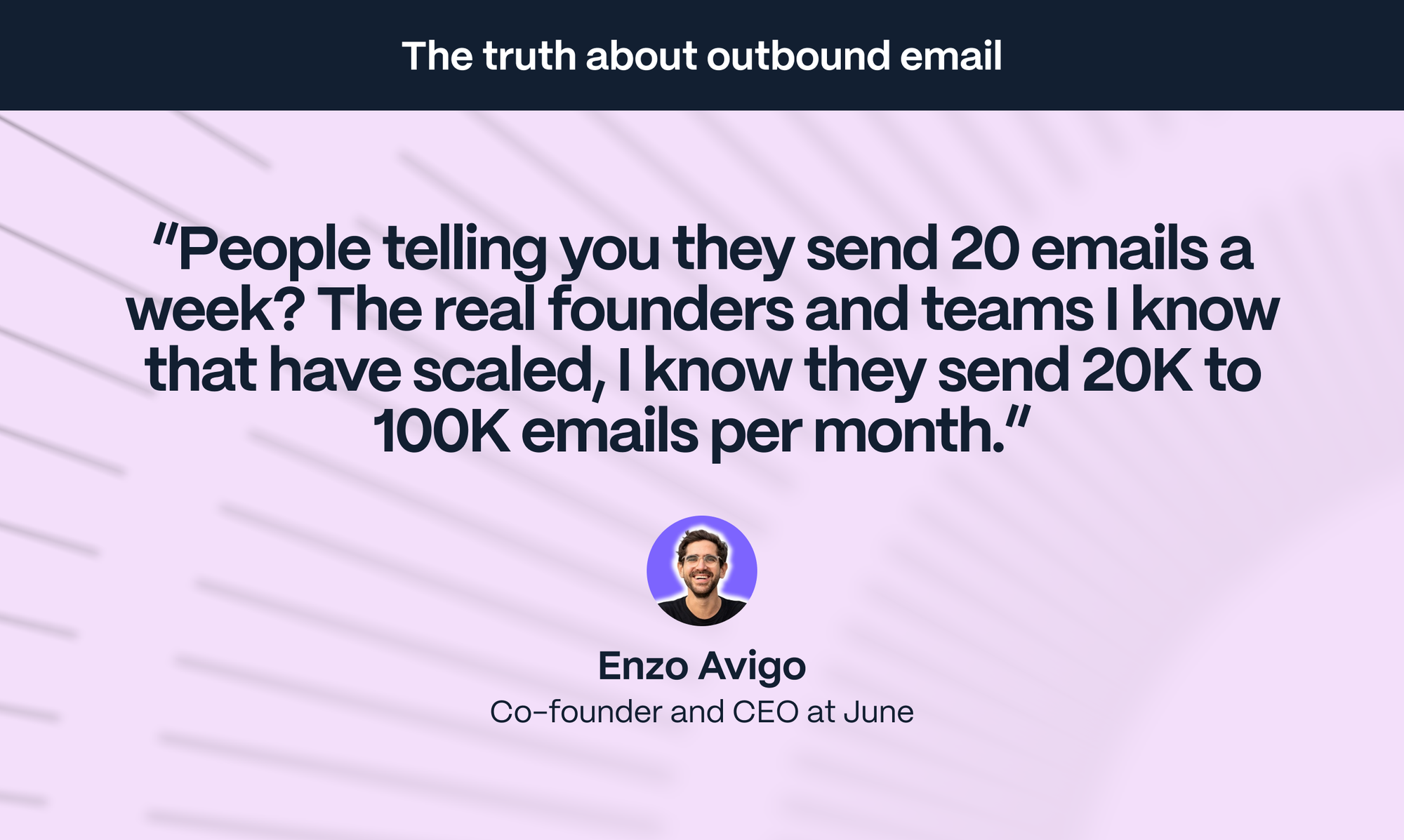
If you want to do outbound sales, you need to have crazy high volumes today. I don't know a single company doing outbound sales, which is extremely successful, that doesn't have crazy high volumes. So in the early days, of course you can send a couple of emails, but I think there is a bit of a fake story on social media.
So don't start by sending shit ton of emails. It's not going to work. Email is a very saturated channel. You have to know that.
- Enzo Avigo, co-founder and CEO of June
What good customers look like
Let’s be honest. Everybody's first vision for their product kind of sucks. Which is why it’s so essential to find early adopters who will effectively co-design your solution with you. Those first customers might not have the highest willingness to pay at this point. But they care so much about the problem that they are willing to give a lot of their time as currency.
When we looked for our early adopters at Clarify, we optimized for customers who regularly used new tools from startups and were quintessential early adopters. If they didn’t look like that, we cautioned them that Clarify might not be a good fit and that the initial version of the product they were signing up for would have a lot of rough edges. We asked the customers who signed up anyway to commit to things like a shared Slack channel and regular feedback meetings on the product, roadmap, and strategy.
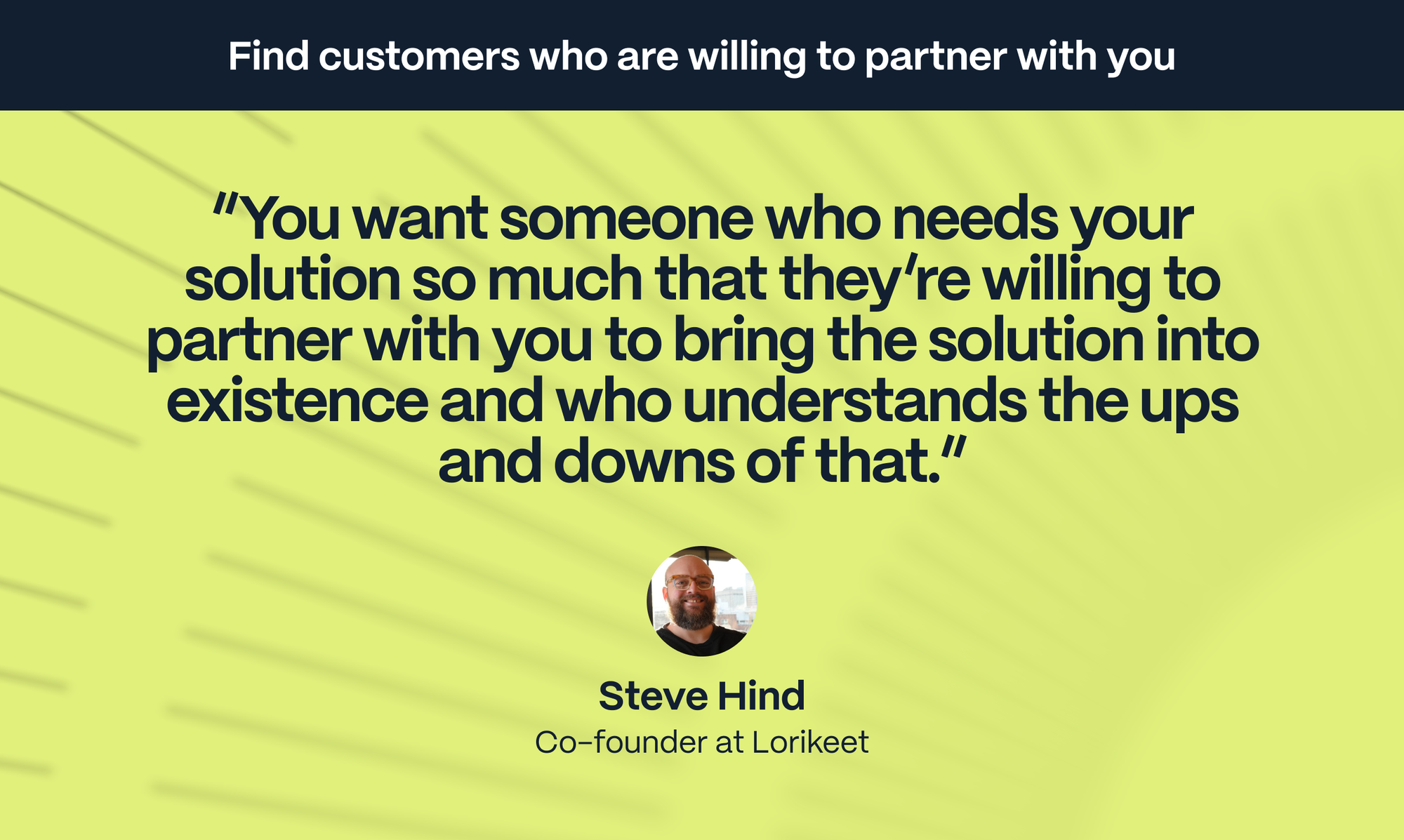
And from your side, you need generosity to make them feel like they got a great deal — you commercialize them slower and on worse terms.
- Steve Hind, co-founder and CEO of Lorikeet
Quality feedback is so important that you should be willing to sacrifice some revenue to get it. Before the public launch of Clarify we had an early access program (EAP) that was all about attracting customers who would co-build with us and tolerate rough edges. Some startups will charge up to $5,000 for those programs but ours was free, because it was more important to get the right customers.
We had over 50 companies on the program and over the course of a few months we converted dozens of them into paying customers. They were replacing their incumbent CRM with Clarify, which gave us the conviction that it was time to launch publicly.
The EAP generated some really valuable insights. The number one thing customers were asking for was a tool that would help them generate more pipeline. Even though I personally didn’t want to build that, it was what our customers were asking for and we adapted.
Should you chase logos?
At our previous startup, Iteratively, we landed Carta as our first enterprise customer, and they gave us lots of product feedback, which we ignored. (More on that here). They knew the problem better than we did and the feedback would have accelerated our product development but by ignoring it we lost them as a customer.
Fortunately, we closed Box shortly afterwards. That one logo of a publicly traded company and a great referenceable customer unlocked so much deal flow. Suddenly, we could outbound to other publicly traded companies. Any concerns they had about security and privacy, we could point to Box and say we’d been through it before. It accelerated our sales velocity and transformed our win rate with enterprises. So yeah, I think it is okay to choose kind of a marquee customer and go after them and spend a ton on them.
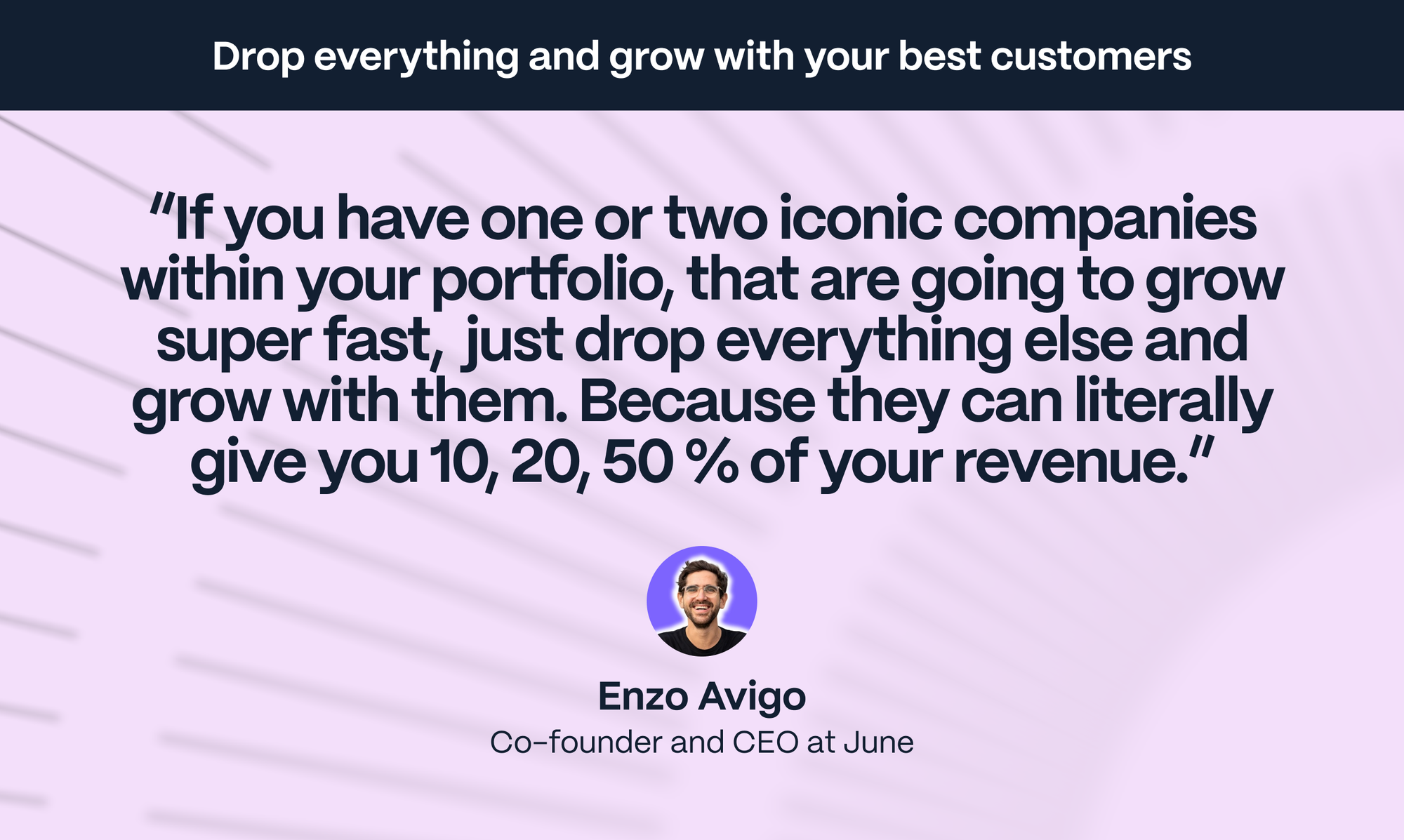
Piggyback on fast-growing companies. Mixpanel, which was the number one company in our space, grew with Uber in the early days, and this account became their main account for many years.
If you try to serve all the customers, they're very likely going to have very different use cases or subtle differences that are going to take you forever to build and to market.
- Enzo Avigo, co-founder and CEO of June
Not all logos are equal, though. At Clarify, we’re building for startups and SMBs, so we’re not prioritizing features like role-based access controls, audit logging, or SSO. That also informs the kind of logos we want — referenceable marquee logos that are recognizable within the startup community.
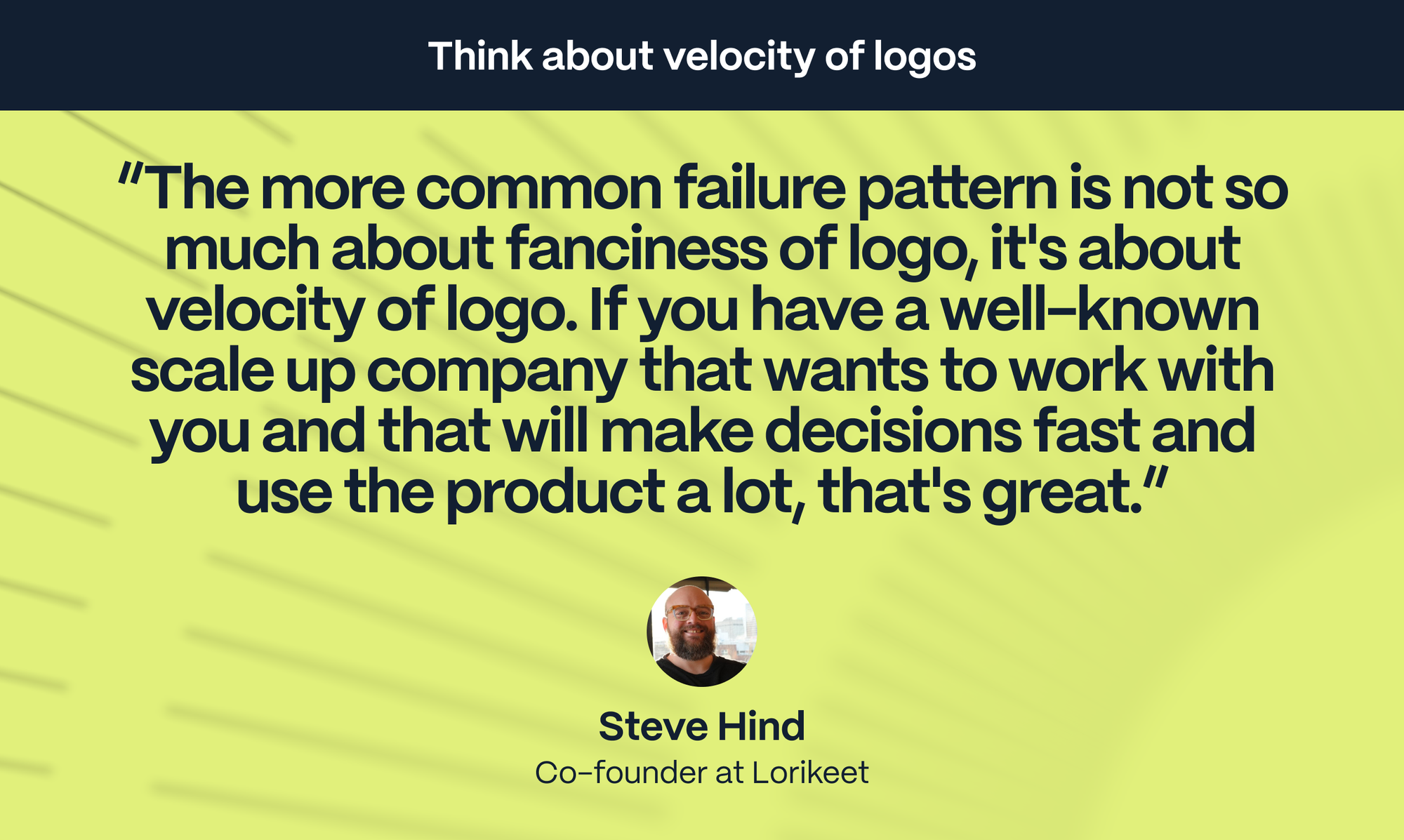
Who do you want to build for?
Some founders are motivated by building a successful business, others want to be in control of their own destiny, while others simply want financial stability. All of which are fine.
For me, it’s a case of who do I love solving problems for? I’m committed to talking to these people for the next 15 years, so I'd better love our customers. If you don’t love solving problems for your ICP, I wouldn’t recommend building a business around them. Because otherwise, it’s just so easy to lose motivation when shit gets tough.
And trust me — it will.
Get our newsletter
Subscribe for weekly essays on GTM, RevTech, and Clarify’s latest updates.
Thanks for subscribing! We'll send only our best stuff. Your information will not be shared and you can unsubscribe at any time.
